You’ve probably heard of the overpriced digital images worth thousands and even millions of dollars. The most expensive NFT ever sold is “The Merge,” created by a digital artist called Pak. The piece was put on an auction on December 2, 2021, reaching a final bid of $91.8 million. Since then, the number of NFT collections has grown substantially, and many aspiring artists have gotten involved in NFT creation.
Even one of the largest sports apparel brands, Nike, started its own NFT project called Cryptokicks. Calling their project successful is like saying nothing. One of their virtual sneakers was sold for $130,000. However, Nike has worldwide recognition and basically unlimited marketing funds, so projects like this are yet another source of income for them.
It’s an ongoing trend among businesses to get into the NFT space and sell their own NFT art. However, there are several cost factors to consider regarding NFT minting and popular NFT marketplaces. Don’t worry, though. At the end of the article, you’ll become aware of NFT costs and more than prepared to mint your first one!
The Basics of NFT
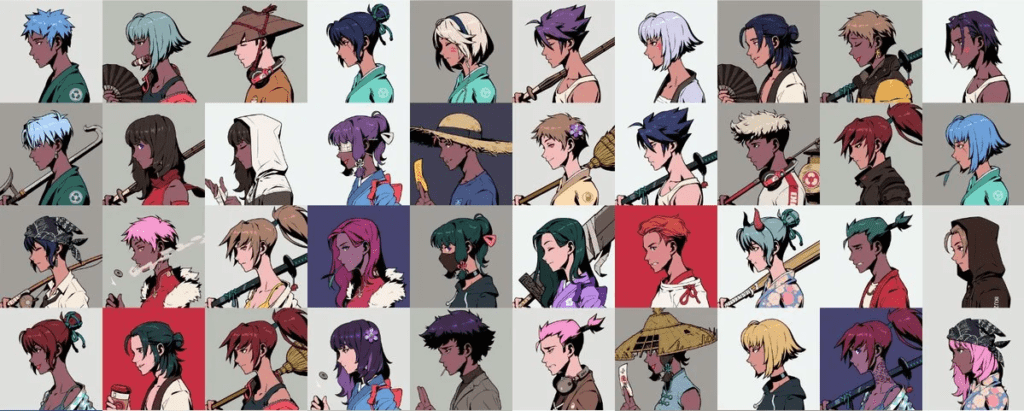
You can probably call an NFT when you see one but do you know the exact definition? NFTs (non-fungible tokens) are digital assets characterized by their uniqueness. While digital art is the most common among NFT artists, it’s not the only option. NFTs take many forms: smart contracts, video game items, music, real-world physical experience, and more.
However, the key to success is being unique. If an entire NFT collection has something others don’t, it’s significantly easier to attract potential buyers. NFTs offer consumers one-of-a-kind digital asset that belongs only to them and can be later sold for profit. No wonder people are willing to learn about the NFT creation process.
However, the creation process isn’t free. You’ll have to spend money when minting NFT. The overall cost of minting depends on several factors, which we’ll explain in detail below.
NFT Minting
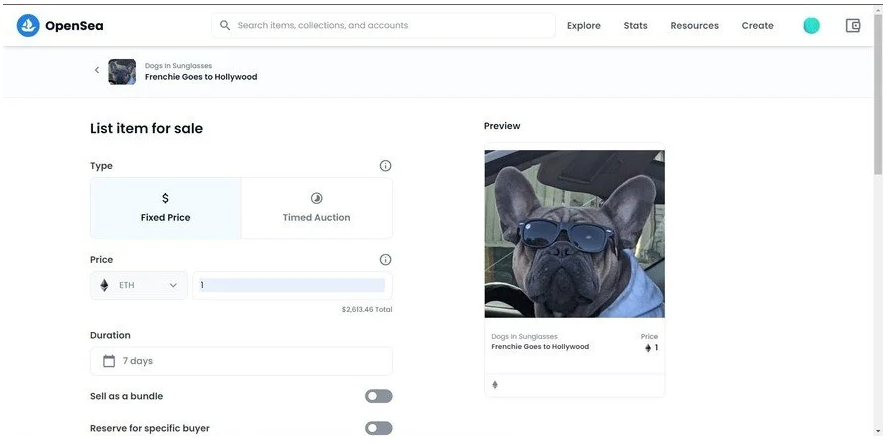
The essential part of NFT creation is minting. The mining process involves converting your images, videos, sound files, etc., into crypto assets or tokens. Each NFT creator can freely control their creations and receive compensation for their work. It also works in favor of potential buyers.
NFT minting ensures collectors and investors that each creation within the NFT collection is unique. Buyers can also store and trade NFTs like any digital asset using their crypto wallet. It means that NFTs and cryptocurrencies can be kept in one place.
The NFT minting process solely depends on the blockchain you decide to use. There are several blockchains platforms to choose the most popular ones being:
- Ethereum blockchain
- Polygon blockchain
- Solana blockchain
Before you decide which one you want to use, it’s important to know the pros and cons of each blockchain. The overall cost will depend on the blockchain and the NFT marketplace chosen to mint your NFT.
Costs Associated with NFTs
Apart from the chosen blockchain, the main costs associated with NFTs are as follows:
- Gas fees. A blockchain transaction fee is paid to network validators for their services to the blockchain. Without gas fees, there would be no incentive for anyone to help secure the network.
- Account fees. This solely depends on the NFT marketplace of your choice.
- Listing fee. While there are platforms where you can mint your NFTs for free, they will charge for listing your NFT for sale.
These are the most common costs associated with NFT creation. However, the estimated costs will differ depending on many factors – your project’s quality, data size, transaction speed, or time of minting. In times of higher demand, the gas fee can increase significantly. Not to mention the fluctuating prices of cryptocurrencies which also affects the final cost. The price fluctuation can be steep, ranging from $1 to even $500.
Even the time of day can have an impact on NFT minting. It’s usually more expensive during the week because of increased on-chain activity. According to that, it will be best to mint NFTs during the weekend, but it isn’t always the case.
Let’s get to the exact numbers, though. Remember that anyone can create an NFT, so even with fluctuating prices, it has to remain accessible. Major platforms like OpenSea, Rarible, or Mintable must keep prices at bay if they want to attract newcomers. Also, these platforms offer two or more blockchains to choose from, so you can control minting fees to a certain extent.
Blockchain Costs
The Ethereum network was the first programmable blockchain ever, and it remains the most popular blockchain. Luckily, Ethereum is not a monopolist, as creators have many more options to choose from, like Polygon and Solana. Despite the available alternatives, Ethereum still holds the number-one spot, and it doesn’t seem to change anytime soon.
The Ethereum network has completed its long-awaited massive update, which changed its mechanism from the Proof-of-Work to a Proof-of-Stake model. In short, the minting fee went down, and the entire process is much faster. It means users don’t have to plan all Ethereum transactions anymore carefully. However, being extra cautious doesn’t hurt, as you can always monitor the current ETH gas fee with a specialized website like ETH Gas Station.
We’ll focus on the three most popular blockchains analyzing their costs to help you decide which one to ultimately choose. The NFT minting cost will vary between blockchains, so this should help you decide which one is right for you.
Polygon Blockchain Platform

Polygon is supported by the largest and most popular NFT marketplace to date, OpenSea. So before you decide on this particular blockchain, you need to create an account on OpenSea. The biggest advantage of choosing Polygon, among other blockchains, is that you can list and mint your NFTs completely for free.
There are no upfront costs when minting NFTs on Polygon, thanks to the lazy minting option. Lazy minting is when an NFT is available off-chain and gets minted once a sale takes place. Artists don’t have to pay any upfront gas fees to mint their NFTs, essentially paying the fees only once the token is purchased.
Speaking of such fees, the platform charges a 2.5% service fee. Also, the selling price will always be shown in ETH, despite using the Polygon network.
Solana Blockchain Platform
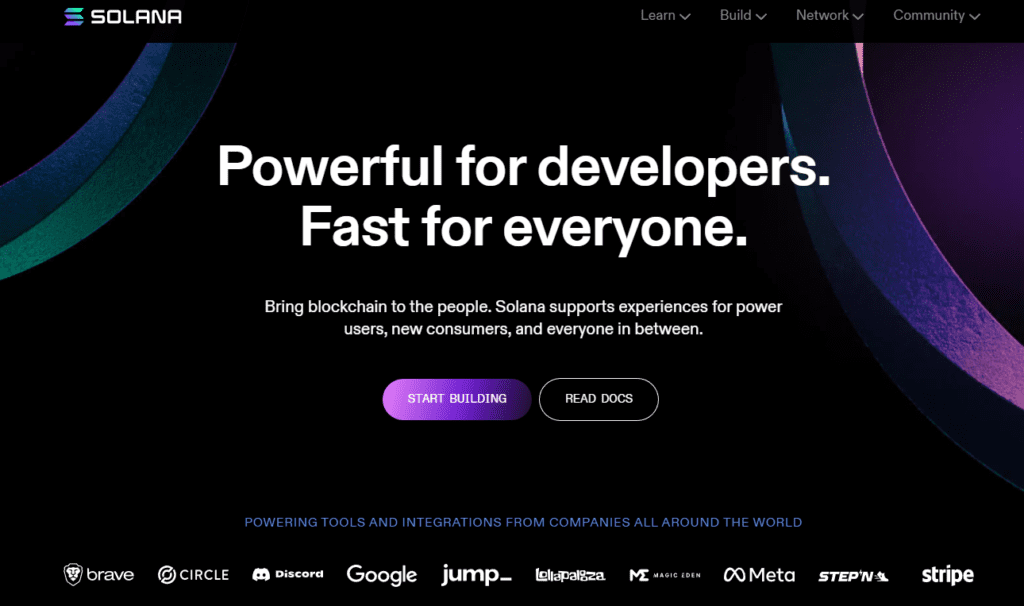
Solana is the second most popular blockchain sitting right behind Ethereum. Before the changes in processing cryptocurrency transactions on Ethereum, Solana was the best alternative for minting NFTs. It’s not as attractive since ETH switched to a proof-of-stake model, but it’s still a viable and affordable option.
Make sure your crypto wallet supports Solana since the most popular ones, like Metamask, don’t. Phantom is a solid choice for that purpose. There are several Solana marketplaces to choose from, but we recommend SolSea, Solanart, and Magic Eden.
The costs of creating NFTs on the Solana blockchain are minimal. You’ll only have to pay the transaction fees for each on-chain activity.
However, minting NFT on Solana has three blockchain transactions in total. Two approval transactions and one for setting the price when listing the NFT. The combination of the three transactions costs approximately $2 total per NFT. At this rate, the cost of minting 10,000 NFT will be around $20,000.
Ethereum Blockchain Platform
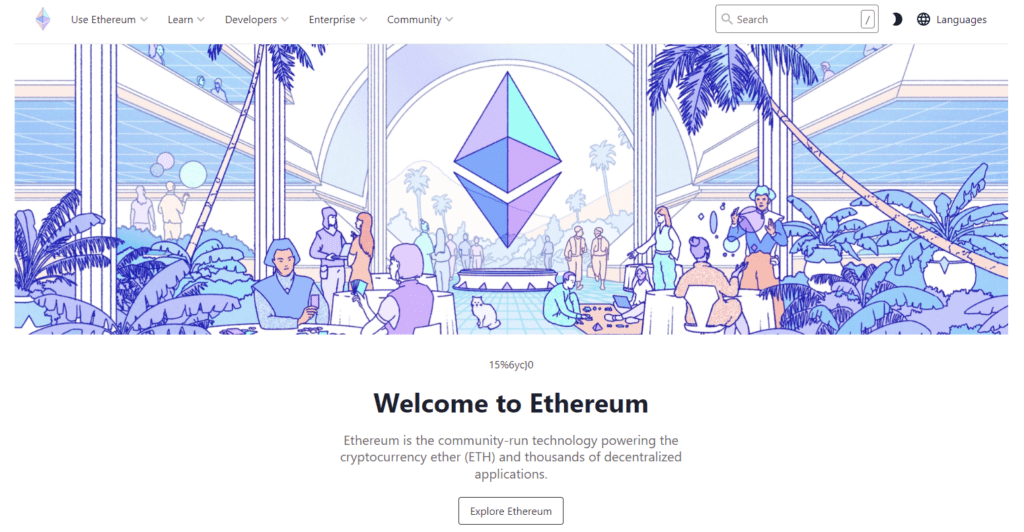
Ethereum is the first and currently the most popular network for minting NFTs, as we mentioned before. Most investors started their crypto journey with this platform, although it’s hard to call it the best one, given the alternatives we just covered.
There was a time when the ETH price reached a whopping $4,891. At that time, minting a single NFT incurred a transaction fee of around $100, making it the most expensive blockchain. Fortunately, this isn’t the case anymore, as most popular NFT marketplaces have found a way to get around those fees. NFT creators can mint NFTs on the Ethereum blockchain free of charge. However, you must cover upfront NFT minting costs to the marketplace you’re using.
Every NFT market supports ETH, so you can use whichever one you prefer. After connecting your wallet and creating your NFT, you can choose between lazy or regular minting. These options are crucial when you want to save money, so we’ll explain them in detail.
Regular Minting
Creating an NFT on the Ethereum blockchain is still expensive, even after migrating to the proof-of-stake model. At the time of writing, the ETH price hovers around $1,200. Minting NFT highly depends on ETH price, so gas fees aren’t the cheapest either. Due to constant price fluctuations, visit Etherscan, which shows the current gas fees for almost every NFT market today.
Luckily for us, there’s another option that doesn’t require any upfront minting fees, which is also known as gasless minting.
Lazy Minting
Minting NFT depends mostly on how much we want to invest in our NFT creations. With lazy minting, you can negate costs to the absolute minimum without any upfront costs. Your NFT registration on the blockchain happens only when someone buys it. As a result, the selling price of the NFT covers the minting fee. The buyer is responsible for minting the tokens, not the NFT creator.
Which Blockchain Should I Choose?
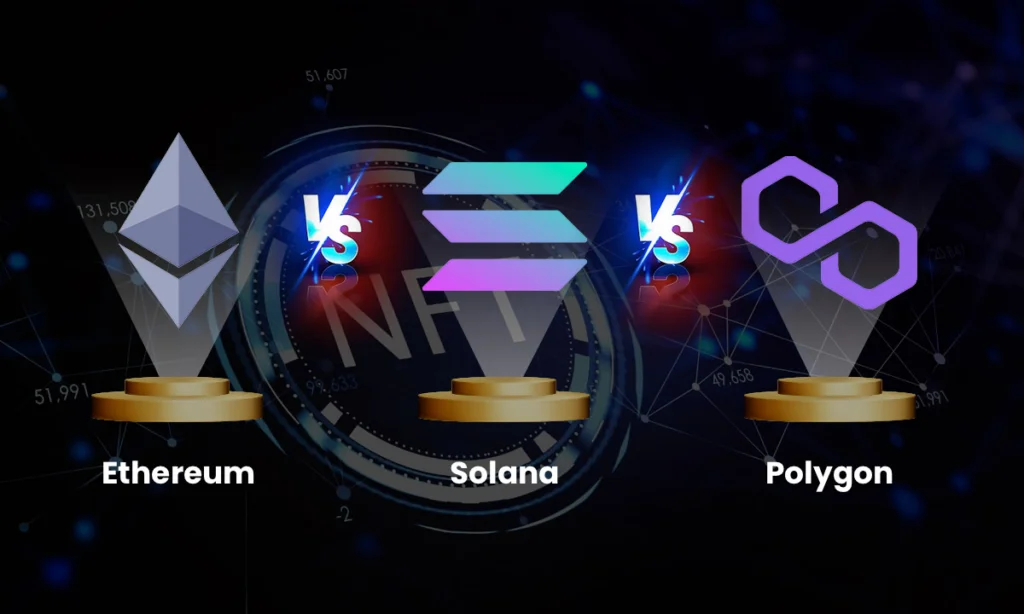
It all comes down to the artist’s personal preferences. Each NFT project is unique, offering different purposes and goals. When just starting out, every platform is great for learning the basics, and you should decide based on the blockchain’s ecosystem and the community built around it. Simply choose what’s most appealing to you.
There isn’t a huge difference when comparing the costs between the three, especially when you opt for the lazy minting option for Polygon or Ethereum networks. These are completely free on every marketplace that supports it, e.g., OpenSea or Rarible. Of course, you can go the traditional way, but you have to consider if it’s worth paying over $100 to list an NFT that might get sold. Unless you have the funds to promote your project and it’s attractive enough for potential buyers, you might consider releasing an entire collection all at once. The only exception here is Solana, which doesn’t offer a lazy minting option, but its network fees are less than a dollar.
Here’s a quick breakdown of the estimated costs when creating an NFT from scratch:
- NFT artwork (skip if you’ve made your own): $20 – $100
- No-Code NFT Generator: ~$200 per collection
- Minting costs (blockchain reliant): $0.03 – $100 per NFT
- Listing fees (NFT marketplace reliant): $0 – $100 + per collection
- Marketplace middleman fees (NFT marketplace reliant): $3 – #100 per NFT
And here, we conclude the overall costs of creating an NFT collection. The final cost is highly reliant on the blockchain you use, the complexity of your image, and how many mints you need. Expect to spend around $20 – $500 to create and mint your collection. Remember that minting on Ethereum is the most expensive due to high gas fees. Best of luck, and happy creating!
FAQ
How Much Does It Cost to Create NFT Art?
It depends on the minting method you choose. Regular minting comes with so-called gas fees you’ll have to pay for each minted NFT. With a lazy minting option, you’re transferring the costs to buyers, meaning you won’t take any additional costs.
How Much Does It Cost to Mint an NFT?
Completely free when using the lazy minting option on OpenSea, Rarible, and Mintable.
Why Are NFTs Expensive?
Thanks to blockchain technology, each NFT is unique, so right-clicking and saving the image won’t make you its owner. Buying an NFT is like owning an original painting for which collectors are willing to pay a small fortune. The rarer, the greater its value.
Can I Earn Money With NFTs?
Of course, as long as you own an NFT with high demand. Buy cheap, sell dear – the oldest market principle. Find the right NFTs to invest in before they become popular. Easier said than done? No one said investing in NFT would be easy.